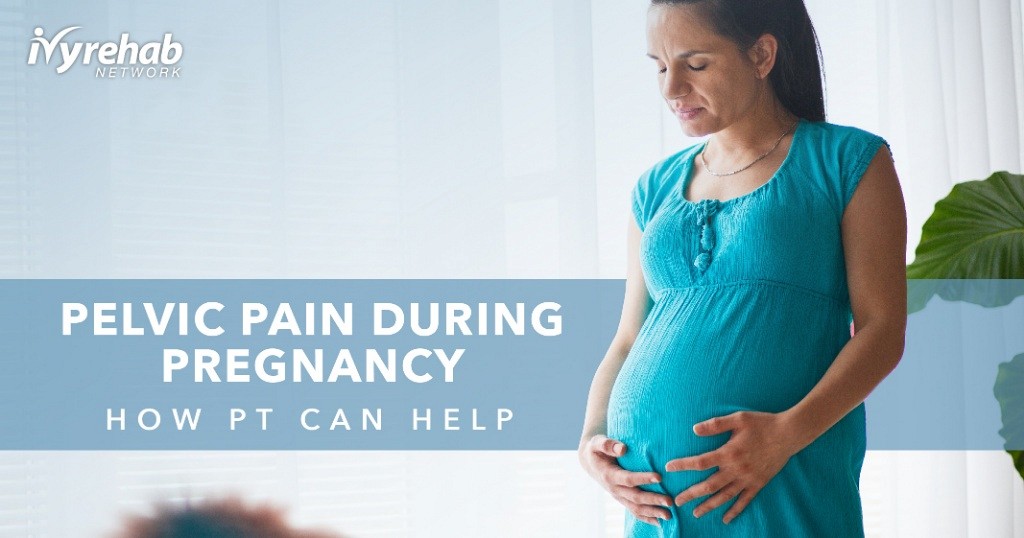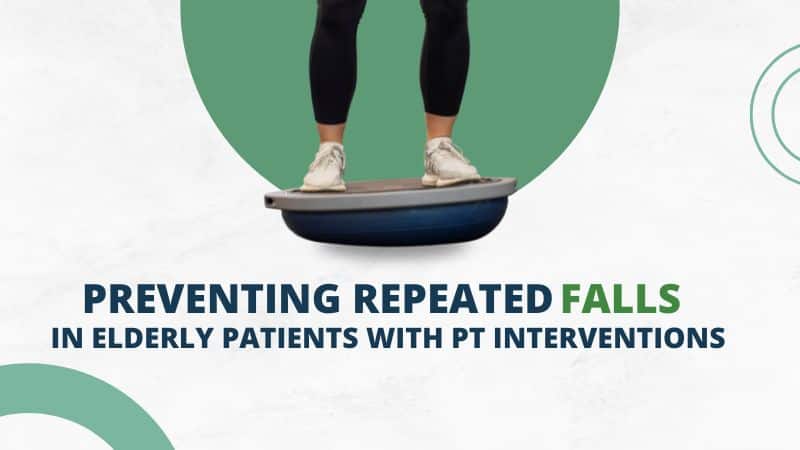Pregnancy is a beautiful and transformative journey, but it also brings dramatic changes to a woman’s body. Many women experience discomfort, pelvic pain, or even sharp pain during different stages of pregnancy due to the weight of the growing baby and the pressure it places on the bladder, hips, pelvis, uterus, and pelvic floor muscles. While mild discomfort is common, persistent or severe pain isn’t something to ignore.
Understanding pelvic floor pressure during pregnancy, including what causes it, when it can become serious, and how to find relief, is essential for protecting both you and your baby throughout this important time. If you are experiencing ongoing pelvic pain while pregnant, read on.
Symptoms of Pelvic Pain During Pregnancy
Generalized pelvic pain or pressure during pregnancy can present in many different forms. Symphysis pubis dysfunction (SPD) or pregnancy-related pelvic girdle pain (PGP) are common and can be treated with physical therapy to help improve functional mobility and pain management.
You may experience pelvic pain at different stages of pregnancy or due to different conditions:
- First trimester: Accommodation pain due to your expanding uterus is a reason for lower pelvic pain symptoms during early pregnancy.
- Second trimester: Round ligament pain that starts in your side as the ligaments that go from the top of the uterus down to the groin stretch is a common cause of pelvic and groin pain during pregnancy in the second trimester.
- Third trimester: Pelvic discomfort and groin pain during pregnancy in the third trimester are also very common in women. Your baby’s weight puts pressure on the nerves that run from your vagina into your legs.
Other symptoms to be aware of
Always be sure to communicate your symptoms to your healthcare provider, so they are aware of your situation. There are also warning signs that may indicate a more serious problem:
If you experience any of the symptoms below along with your pelvic pain, you should seek medical care right away.
- Vaginal bleeding
- Burning sensation while urinating
- Fever
Severe Complications with Pelvic Floor Pressure During Pregnancy
Although most causes of pelvic floor pressure during pregnancy are common and manageable, there are times when the symptoms may indicate more serious complications. Sudden, severe pain; vaginal bleeding; fever; or burning with urine can point to infections, ectopic pregnancy, or early labor. Prolonged or worsening vaginal pressure may also include risks like increased chances of pelvic floor dysfunction or preterm delivery.
Other complications may include:
- Diastasis recti: This occurs when abdominal muscles separate during pregnancy, causing lower abdomen and pelvic pain similar to symphysis pubis dysfunction (SPD).
- Ovarian cysts: These may enlarge during pregnancy and cause persistent abdominal pain.
- Urinary tract infections and constipation: Both can cause pelvic pressure and are treatable with antibiotics, iron supplements, hydration, fiber-rich foods, and stool softeners.
- Pelvic floor pain and pubic symphysis pain: This pain can make walking and daily activities difficult. You may feel discomfort:
- At the front or center of the pubic bone.
- On one or both sides of the lower back.
- In the perineum (between the vagina and anus).
These symptoms may also come with a clicking or grinding feeling in the pelvic area and can worsen when you:
- Walk, bend, or twist to lift.
- Climb stairs.
- Stand on one leg.
- Turn over in bed.
- Move your legs apart or try to get out of a car.
How to relieve vaginal pain and pressure
Managing vaginal pain and pelvic pressure during pregnancy is about finding safe, effective ways to stay comfortable while supporting your changing body. The strategies below can help relieve symptoms, protect your pelvic floor muscles, and make daily activities easier as your pregnancy progresses.
- Manual therapy to help joint alignment and your pelvis, hips, and spine move normally
- Exercises to support your pelvic floor, stomach, back, and hip muscle
- Addressing pain triggers such as posture, flexibility, or nerve involvement
- Education on lifestyle changes for pain relief in pelvic muscles
- Water-based exercises
- Advice on positions for sleeping, sex, and labor and birth
- Pelvic support belt or crutches
- Rest when needed and use safe over-the-counter pain relievers with your doctor’s guidance
It’s important to stay active and do gentle exercise during pregnancy to support your pelvic area. It’s also important to recognize your pain limits and avoid activities that make symptoms worse. Ask for help from your partner, family, and friends with housework, especially if you have to climb stairs to do laundry, make dinner, or care for young children.
Managing Discomfort: Lifestyle Tips for Relief
Simple lifestyle adjustments can go a long way in easing pelvic discomfort during pregnancy. By making mindful choices in how you move, rest, and care for your body, you can reduce pressure on the pelvis, support your pelvic floor, and feel more comfortable as your baby grows. The following tips provide practical ways to manage daily activities while protecting your health.
- Move your bedroom to the first floor
- Wear flat, supportive shoes
- Sit down to get dressed
- Take a warm bath or shower and let the water hit your back
- Get a lymphatic or prenatal massage
- Try gentle exercises such as walking, prenatal yoga, or pelvic tilt movements
- Keep your knees together when getting out of the car or turning over in bed
- Sleep on your side with a pillow between your legs
- Take the stairs one at a time, or go upstairs backward on your bottom
- Avoid bending and twisting to lift or carrying a baby on one hip
- Limit sitting or standing for long periods, crossing your legs, or sitting twisted
- Minimize lifting or carrying heavy shopping bags, vacuuming, or pushing heavy objects such as a supermarket cart to reduce pelvic pain
Pelvic Floor Therapy Can Help
Physiotherapy and physical therapy help to relieve or ease pain, improve mobility, strengthen and improve pelvic joint position and stability. Physical therapy and specialized pelvic floor therapy during and after pregnancy can help decrease low back pain and post-delivery bladder problems.
As movement specialists, PTs are medical professionals trained to identify and address the source of pelvic region pain. A physical therapist can educate expecting moms about safe exercise and body mechanics, including how to lift, stand, and carry other children while pregnant. These techniques can help with muscle pain relief and symptom management.
At Ivy Rehab, our therapists use tailored treatment strategies, including manual therapy, posture retraining, and safe exercise, to help women manage pelvic floor dysfunction before and after birth.
Don’t Ignore Pelvic Pain — Support Your Health
Pelvic discomfort, hip pain, and vaginal pressure are not something to tough out or dismiss because you are pregnant. And physical therapy is not just for post-birth recovery. It can be a valuable part of prenatal care, especially if you need to strengthen your pelvic muscles. Specialized pelvic floor rehab can help your pregnancy and delivery go more smoothly and relatively pain-free or restore strength and address postpartum pain.
Ivy Rehab has a wide network of clinics with professional physical therapists who can treat a variety of Pelvic Floor Dysfunction (PFD) related to pregnancy, delivery, trauma such as a fall or car accident, surgery, or obesity. Pelvic floor physical therapy can improve other pelvic conditions, including endometriosis, interstitial cystitis, or prolapse.
FAQs
Can lifestyle changes really help relieve vaginal pressure during pregnancy?
Yes. Small adjustments like using pillows for support when you sit or sleep, practicing gentle exercise, and avoiding heavy lifting can significantly reduce vaginal pressure and pelvic pain. These changes help you feel more comfortable as your baby grows.
Can pelvic floor pressure during pregnancy affect labor or delivery?
Yes. While most cases are manageable, ongoing pelvic floor pressure during pregnancy may make certain labor positions uncomfortable. Strengthening pelvic floor muscles and getting guidance from a physical therapist can help women prepare for a smoother birth experience.
Does pelvic floor pressure increase the risk of postpartum pelvic problems?
Untreated pelvic floor pressure during pregnancy can sometimes lead to pelvic floor dysfunction after delivery, such as incontinence or prolapse. Early therapy can lower this risk and help protect long-term women health.
How do hormones contribute to pelvic pain in pregnancy?
Pregnancy hormones naturally loosen the ligaments of the pelvis to prepare for birth. This increased flexibility can sometimes cause joint instability, leading to pain and symptoms like vaginal pressure or discomfort when you walk or climb stairs.
What treatments are available if pelvic pain becomes severe during pregnancy?
If at-home strategies aren’t enough, treatment options may include manual therapy, pelvic support belts, guided pelvic floor exercises, and safe medication under a doctor’s supervision. These approaches can help manage severe pain and support your body through pregnancy.

Your Journey to Recovery Starts Here
Experience tailored physical therapy programs designed to alleviate pain and restore function.
Article Reviewed by Holly Lookabaugh-Deur, PT, DSc, GCS, CEEAA
Holly Lookabaugh-Deur, PT, DSc, GCS, CEEAA is a practicing physical therapist and a partner and Director of Clinical Services at Ivy Rehab Network. Deur is board certified as a geriatric clinical specialist and certified exercise expert for aging adults with more than 35 years of clinical experience. She is certified as an aquatic and oncology rehabilitation specialist and serves as adjunct faculty at Central Michigan University and Grand Valley State University.





